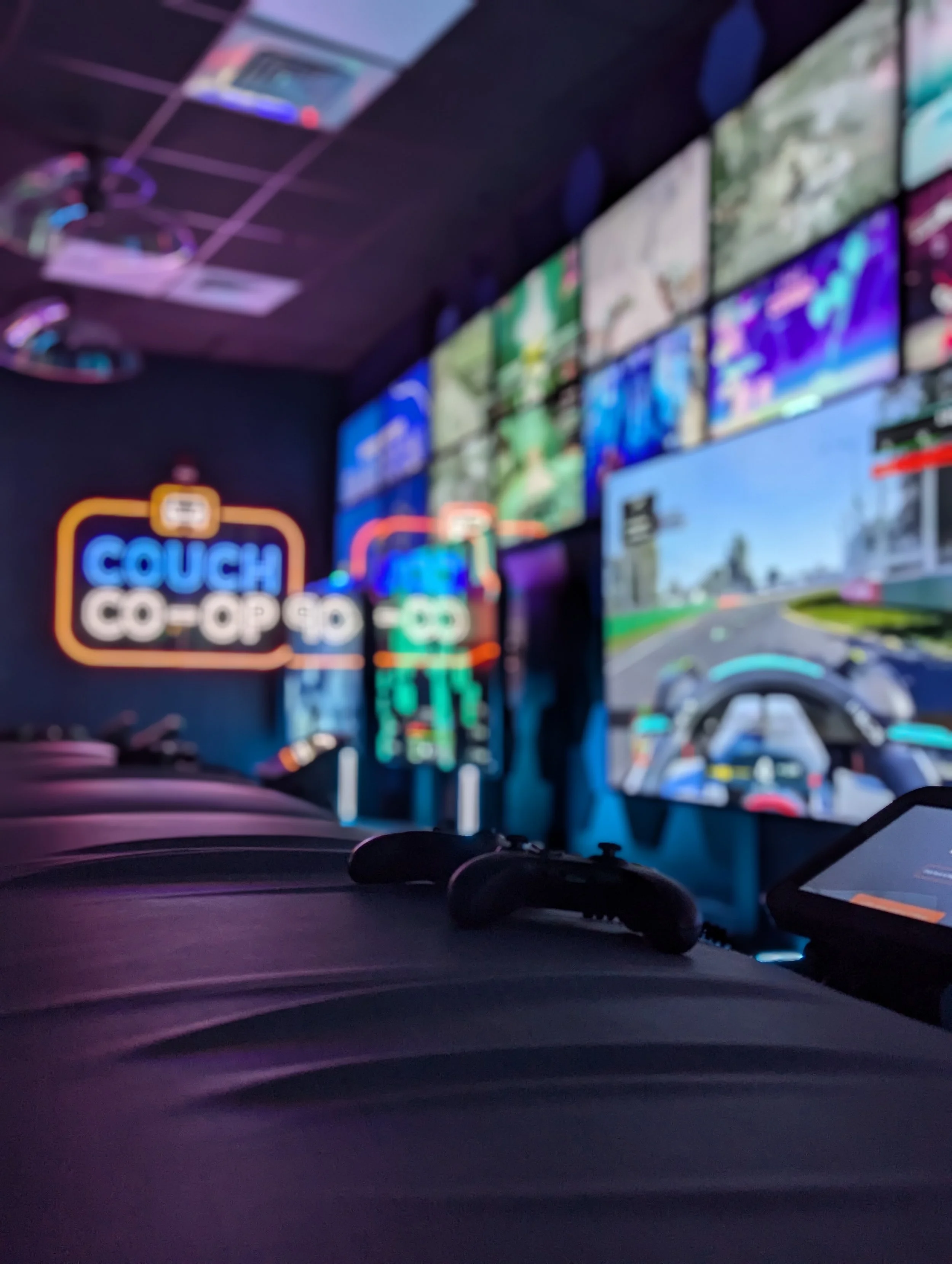
Key Tips for Building a Gaming Lounge
In recent years, gaming has evolved from a niche hobby to a cornerstone of campus social life. According to recent data from the Entertainment Software Association, 88% of gamers report that gaming expanded their social circle, while 82% credit gaming with introducing them to new friends and relationships. As universities seek to enhance student engagement and build community, dedicated gaming spaces offer a powerful solution that meets students where they are.
Many institutions still lack modern, purpose-built gaming facilities, forcing student groups to improvise with personal equipment in multipurpose spaces. This approach creates barriers to participation, particularly for students without the means or technical expertise to navigate such arrangements. A well-designed gaming lounge eliminates these obstacles while creating an inclusive environment where diverse student populations can connect.
Here are five essential considerations when planning a university gaming lounge:
1. Strategic Layout and Sightlines
First impressions matter. When students enter a gaming lounge, they should immediately see the range of activities available to them. Design your space with clear sightlines to visually distinct areas—arcade machines, streaming studios, console gaming stations, and social seating. This visual accessibility helps newcomers quickly identify activities of interest and encourages exploration of the space.
A thoughtful layout also facilitates flow between different gaming experiences, allowing students to naturally progress from spectating to participating as their comfort level increases.
2. Community-Oriented Audio Solutions
While gaming traditionally involves headphones, this approach can isolate players and diminish social interaction. Consider implementing directional surround sound speakers in designated areas to create immersive audio experiences without cutting players off from the surrounding environment. This technology enables communication between players and spectators, fostering a more communal atmosphere.
Reserve headphone-only stations for competitive play or situations requiring focused concentration, but prioritize open-audio solutions wherever possible to maintain the social character of the space.
3. Inclusive Gaming Configurations
A successful gaming lounge accommodates various play styles and skill levels. Alongside individual gaming stations, incorporate dedicated areas for splitscreen and cooperative play, which remain extremely popular among casual gamers. These shared experiences create low-pressure entry points for newcomers and encourage spontaneous participation.
Provide a mix of gaming options that range from competitive esports titles to accessible party games. This diversity ensures that students of all gaming backgrounds—from complete beginners to serious competitors—find activities that match their interests and abilities.
4. Spectator-Friendly Environment
The rise of platforms like Twitch demonstrates that watching gameplay can be as engaging as playing. Design your space with ample spectator seating strategically positioned around gaming stations. This arrangement accommodates students who may initially feel uncomfortable participating directly but still want to be part of the community.
Consider implementing local broadcasting technology that displays gameplay on larger screens throughout the space. This feature not only enhances the spectator experience but can also showcase student talent and build excitement around gaming events.
5. Sustainable Maintenance Strategy
Perhaps the most overlooked aspect of gaming facility planning is long-term maintenance. Gaming equipment requires regular attention to remain operational and relevant. Controllers experience heavy wear, software needs frequent updates, and new games must be added to keep pace with evolving trends.
Develop a dedicated maintenance plan with clear responsibilities and timelines for equipment testing, software updates, and hardware replacement. Budget for ongoing costs rather than treating them as one-time expenses. Remember that student engagement will quickly decline if equipment malfunctions or the game library becomes outdated.
____
By prioritizing these considerations, universities can create gaming spaces that serve as vibrant hubs of student interaction. A well-executed gaming lounge does more than provide entertainment—it builds bridges between diverse student populations, creates opportunities for social connection, and contributes to a sense of belonging that enhances overall campus life.
When designed with inclusivity and community in mind, gaming facilities leverage an activity students already enjoy to foster meaningful connections that extend far beyond the digital realm.
Ready to Transform Your Campus Gaming Experience?
GameLab provides comprehensive, turnkey solutions for universities looking to create impactful gaming environments. As the nation’s premiere turn-key solutions provider for designing, installing, & operating automated gaming lounges, we handle every aspect of development—from initial concept and design to equipment procurement, installation, and ongoing maintenance.
Our experienced team understands the unique challenges of campus environments and can help you navigate budgeting constraints while maximizing student engagement. We offer scalable solutions that grow with your needs and ensure your facility remains cutting-edge for years to come.
Don't let your students settle for improvised gaming setups in multipurpose spaces. Partner with GameLab to create a dedicated gaming facility that builds community, increases student satisfaction, and distinguishes your institution as forward-thinking and student-centered.
Contact GameLab today to discuss how we can bring your university gaming lounge from concept to reality—all through one experienced provider.






